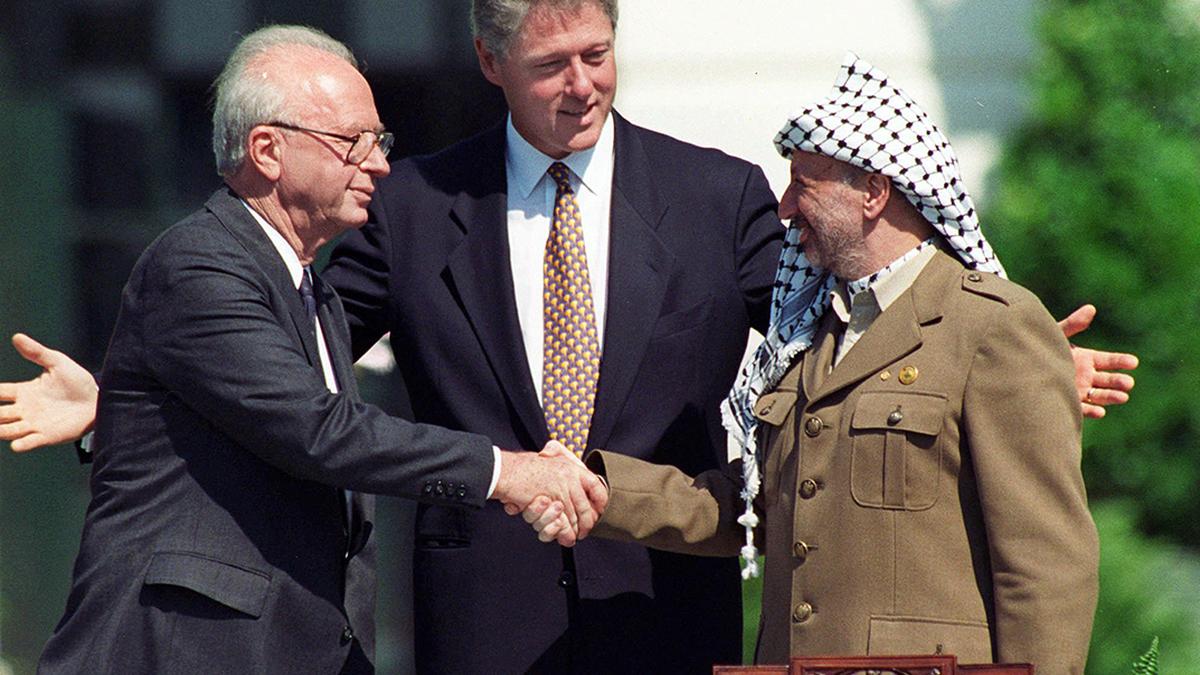Perhaps the only surviving relic of the long-targeted peace process and decades of futile negotiations intended to end Palestinian suffering is the continued talk of the two-state solution. All the other once-sacred phrases — ‘land for peace,’ ‘confidence-building measures,’ ‘final status issues’ — have faded from headlines and memory alike. Yet today, the international community — everyone but Israel and its staunch patron, the United States — continues to parrot the words ‘two-state solution’ as if they have just discovered a miracle, or reinvented the wheel.
But even a cursory glance at United Nations General Assembly Resolution 181, known as the Partition Plan of Palestine, reveals that the essence of the two-state solution lies within it. Passed in 1947, it called for the creation of two states — one for the Jewish and one for the Palestinians — on the land of historic Palestine. It is, in every sense, the birth certificate of the two-state idea. Yet, in practice, it gave birth to only one state: Israel. The Palestinian state remains unborn. It is trapped in legal text, denied by force, and smothered by a chronic lack of international political will.
A ‘two-state’ reality
Ironically, if we examine the ground today, we can see that a two-state reality has indeed taken form — but both are Israel’s. The first state is the one declared on May 14, 1948, established through the expulsion and ethnic cleansing of the indigenous Palestinian people on 78% of the historical land of Palestine.
The second is rising now on the remaining 22% of the historical land of Palestine, within the borders of the 1967-occupied Palestinian territories: a de facto Jewish messianic state. We can refer to it as the Halakha state — or more plainly, the settler messianic state. It has its own armed militias, openly backed by the Israeli army; its own budget; its own political infrastructure. It is ruled not by Tel Aviv, but by the Yesha Council, an acronym for Yehuda (Judea), Shomron (Samaria), and Aza (Gaza), and subdivided into semi-autonomous regions: the Shomron, Gush Etzion, and Binyamin Regional Councils. Each functions like a federal entity within a greater settler theocracy.
This second state was conceived on the very day Israel occupied the West Bank, including East Jerusalem, and Gaza in 1967. Since then, a stream of legal documents, military orders, appropriated Ottoman and British Mandate laws, and selectively applied Israeli legislation have built its legal scaffolding. This carefully crafted system is meant not only to entrench this parallel state, but also to render the internationally supported two-state solution obsolete.
Israel has grown accustomed, perhaps even addicted, to the diplomatic niceties of international officials, knowing they hold no real consequence. Worse, Israel has now developed a counter-logic, bolstered by its allies, to challenge the very foundations of the two-state vision. The current U.S. Ambassador to Israel, for instance, has gone so far as to claim there is “no such thing” as Palestinians.” This genocidal rhetoric has been met by the international community with blind eyes at best and silent complicity at worst.
By signing the Oslo Accords in the early 1990s, the Palestinian leadership made a historic and painful concession: they agreed to establish their future state on just 22% of their ancestral homeland — Palestine. This was not easy. Even UN Resolution 181 had originally allocated 46% of historic Palestine to the Palestinian state.
At a crossroads
Today, the international community stands at a crossroads. Will it act decisively in favour of a just and rational two-state solution that ends the Palestinian tragedy and brings a sustainable peace for all? Or will it continue to turn a blind eye to the entrenchment of the messianic and evangelical vision that guarantees only bloodshed and despair for Palestinians on their homeland?
This is not just a policy debate; it is a moral test. While a genocidal war is being livestreamed to every screen around the world, we must confront a fundamental truth: there can be no peace without justice. There can be no lasting solution without granting the Palestinian people their basic rights, foremost among them the right to self-determination.
International law, human rights, and humanitarian principles must be applied equally and universally. If the world continues to let Israel, an occupying power, expand and maintain its illegal settlements instead of compelling it to dismantle them, the so-called Halakha state will not only be established in the West Bank, but it will also increasingly dominate and redefine the entire Israeli state. That outcome would be a disaster for Palestine, the whole region, and the world.
The international community has the tools for action. Recently, powerful countries implemented over 16,500 sanctions against Russia. Yet, they remain unable — or unwilling — to adopt even a single meaningful sanction against Israel. On the contrary, Israel continues to receive unconditional military and intelligence support, while the cost to Palestinians exceeds 54,000 lives and counting. From economic sanctions, arms embargoes, and diplomatic pressure to legal accountability in international courts, the tools are within reach but there is no political will.
The world must stop treating Israel as a state above international law and indulging it as though it is a spoiled, reckless adolescent. Accountability is not a luxury; it is a necessity. It is the only path to peace. This may well be the final warning before apocalyptic fantasies turn into a devastating global reality, replacing the two-state solution with endless war.
Abdullah M. Abu Shawesh is the Ambassador of State of Palestine to India
Published – July 15, 2025 01:16 am IST
